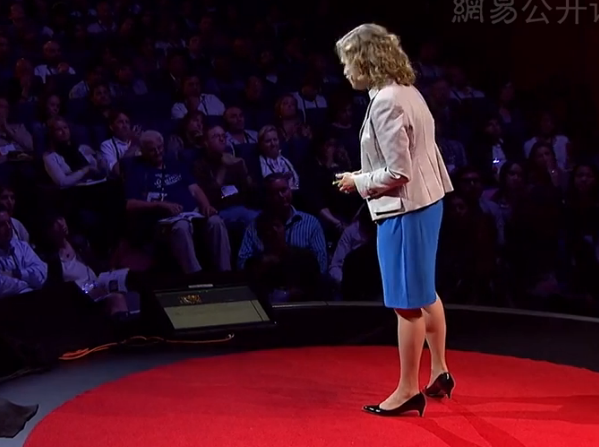Beyond these technical solutions,
除了這些技術(shù)層面的措施意外,
our work at the Georgetown Climate Center with communities
我們位于喬治城氣候中心和社區(qū)共同工作
encourages them to look at what existing legal and policy tools are available
鼓勵(lì)他們參考現(xiàn)存的法律和政策
and to consider how they can accommodate change.
并且考慮如何才能適應(yīng)變化。
For example, in land use, which areas do you want to protect, through adding a seawall,
譬如,用地,哪片地區(qū)你想要通過(guò)用建設(shè)防波堤的方式去保護(hù),
for example, alter, by raising buildings, or retreat from,
再比方通過(guò)升高建筑,或向后搬遷
to allow the migration of important natural systems, such as wetlands or beaches?
去允許重要的自然系統(tǒng)遷徙,比方說(shuō)濕地或者沙灘?

Other examples to consider.
這里同時(shí)有其余的例子,
In the U.K., the Thames Barrier protects London from storm surge.
在英國(guó),泰晤士河保護(hù)倫敦免遭于風(fēng)暴潮襲擊。
The Asian Cities Climate Resilience Network is restoring vital ecosystems like forest mangroves.
亞洲城市氣候變遷韌性組織正在修復(fù)類似于紅樹(shù)林的重要的生態(tài)系統(tǒng)。
These are not only important ecosystems in their own right,
這些生態(tài)系統(tǒng)不僅僅是本身是重要的
but they also serve as a buffer to protect inland communities.
而且同時(shí)充當(dāng)了緩沖區(qū)的作用來(lái)保護(hù)內(nèi)陸地區(qū)。
New York City is incredibly vulnerable to storms,
紐約在暴風(fēng)雨面前顯得十分脆弱,
as you can see from this clever sign, and to sea level rise,
就想你在這塊指示牌上看到的一樣,紐約同時(shí)也經(jīng)不住海平面上升
and to storm surge, as you can see from the subway flooding.
暴風(fēng)雨,正如你從這幅紐約地鐵漲水圖中看見(jiàn)的一樣。
But back above ground, these raised ventilation grates
但是當(dāng)我們返回到地面,這些上升的地鐵通風(fēng)格欄
for the subway system show that solutions can be both functional and attractive.
系統(tǒng)提醒我們措施可以同時(shí)是有功能效應(yīng)且引人注意的。
In fact, in New York, San Francisco and London,
事實(shí)上,紐約,舊金山和倫敦,
designers have envisioned ways to better integrate the natural and built environments with climate change in mind.
設(shè)計(jì)師們已經(jīng)設(shè)想出了能更加契合自然并且兼顧應(yīng)對(duì)自然變化的建設(shè)方法。
I think these are inspiring examples of what's possible
我認(rèn)為這些設(shè)想都是十分打動(dòng)人心的例子
when we feel empowered to plan for a world that will be different.
讓我們認(rèn)為自己有能力去改變這個(gè)世界。
But now, a word of caution.
但是現(xiàn)在,請(qǐng)謹(jǐn)記著
Adaptation's too important to be left to the experts.
對(duì)這些專家而言適應(yīng)也是十分重要的。
Why? Well, there are no experts.
為什么?因?yàn)榫蜎](méi)有所謂的專家。
We're entering uncharted territory, and yet our expertise and our systems are based on the past.
我們正在進(jìn)入一個(gè)全新的領(lǐng)域,而目前為止,我們的專長(zhǎng)和系統(tǒng)都僅僅是建立于過(guò)去的。
"Stationarity" is the notion that we can anticipate the future
“平穩(wěn)”是我們將使用于未來(lái)的準(zhǔn)則
based on the past, and plan accordingly,
基于經(jīng)驗(yàn),同時(shí)隨機(jī)應(yīng)變,
and this principle governs much of our engineering,
與此同時(shí),這也是一個(gè)領(lǐng)導(dǎo)我們當(dāng)今工程
our design of critical infrastructure, city water systems,
當(dāng)今設(shè)計(jì)核心基礎(chǔ)設(shè)施,城市排水系統(tǒng),
building codes, even water rights and other legal precedents.
建筑規(guī)范,甚至用水權(quán)以及其余判例的詞。
But we can simply no longer rely on established norms.
但是我們?cè)谝膊荒軆H僅依靠建立規(guī)范了。
We're operating outside the bounds of CO2 concentrations that the planet has seen for hundreds of thousands of years.
我們已經(jīng)超如了地球上已經(jīng)恪守了成千上萬(wàn)年的二氧化碳濃度限制。
The larger point I'm trying to make is this.
我在這里想說(shuō)的是
It's up to us to look at our homes and our communities,
這是我們的責(zé)任去照顧我們的家園和社會(huì)
our vulnerabilities and our exposures to risk,
我們的脆弱且易暴露于危險(xiǎn)之中的家園。
and to find ways to not just survive, but to thrive,
不僅僅是去找尋一個(gè)生存的辦法,而是一個(gè)繁榮興旺的辦法。
and it's up to us to plan and to prepare
而且這是我們的責(zé)任去規(guī)劃和準(zhǔn)備
and to call on our government leaders and require them to do the same,
提醒我們的政府領(lǐng)導(dǎo)并且要求他們?nèi)プ鐾瑯拥氖拢?/div>
even while they address the underlying causes of climate change.
即便與此同時(shí)他們正在強(qiáng)調(diào)潛伏的氣候變化原因。
There are no quick fixes.
這沒(méi)有權(quán)宜之計(jì)。
There are no one-size-fits-all solutions.
這里沒(méi)有完全之策。
We're all learning by doing.
我們只有從實(shí)踐中學(xué)習(xí)。
But the operative word is doing.
關(guān)鍵詞是做去,去實(shí)踐。
Thank you.
謝謝。



